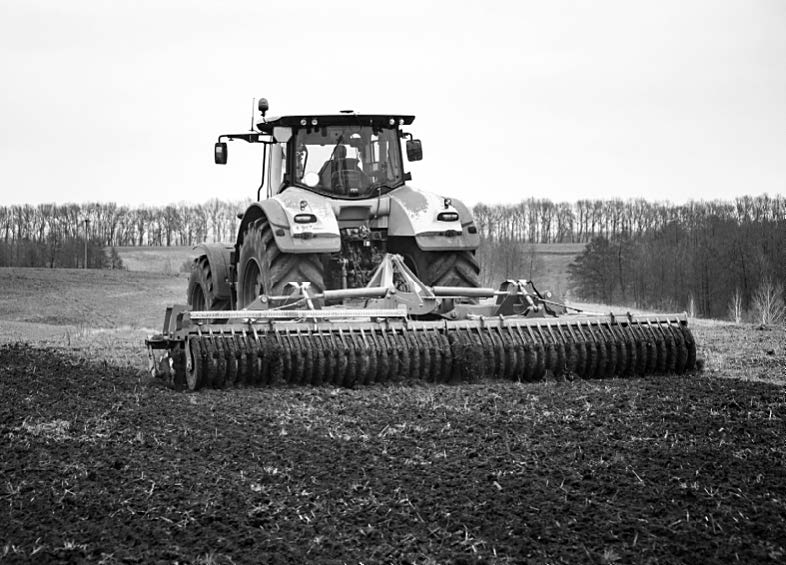DIG IN
Assess your resources as well as your plans. Consider your time, money, and equipment.
If your land is forested, you'll have to cut trees (or hire a forester to do it) and then deal with stumps. It's a multistep process. A Bobcat or a bulldozer with a rock rake is usually required to remove large rocks and stumps, but more tillage operations may be in order. Plan to chip-cut branches and twigs for mulch or gather them into a burn pile. Doing the work yourself can save money but take longer than if you enlist help and serious machinery. In moderately overgrown fields, you may get good results (e.g., success in clearing) with a mower attached to the back of a tractor, aka a brush hog. Likely you'll need to mow more than once.
Land that is free of small trees, stumps, or shrubs— merely abandoned and depleted—may require other machinery. Van Hazinga much prefers using a disk harrow to employing a moldboard plow; the plow turns up about 7 inches of soil, completely inverting it. "A disk harrow mixes growth—hay stems, weeds, and roots—in the top couple of inches" he says, "allowing for aerobic decomposition and the growth of bacteria and microflora, which actually feed the plants in a constant exchange. Photosynthesis powers the whole system, creating oxygen as it grows and decays."
You'll need patience, perseverance, and a very sharp spade and hatchet, plus safety gear, to clear overgrown land by hand. Small rocks may call for handpicking. Woody stumps need special attention: Cut stumps close to the ground, then burn them or fill drilled holes with salt to kill them. Or use a mechanical stumper with a mulching head to grind stumps into sawdust.
(continued)

Photo: sasapanchenko/Getty Images